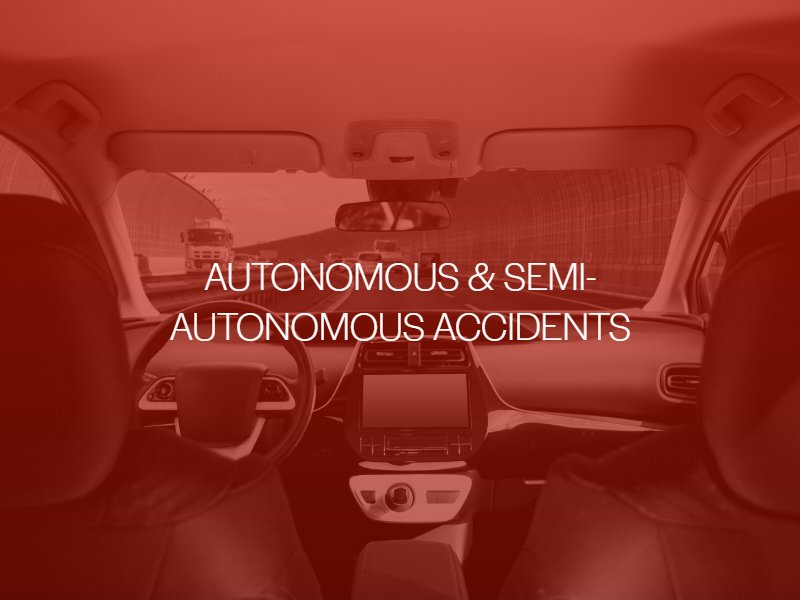Autonomous & Semi-Autonomous Car Accidents in Pennsylvania
Advanced technology is placing more and more autonomous and semi-autonomous vehicles on the road. When automated cars work as they are designed to, they can be safe and convenient. However, equipment and technology failures can result in serious and potentially deadly collisions. As a result, many questions revolve around liability for autonomous and semi-autonomous car accidents.
Who Is Liable In an Automated Auto Accident?
Determining who is liable in an automated auto accident is often very challenging and complex. Since laws have not been established yet on liability for self-driving car accidents, liability will depend on the cause. Therefore, who is liable must be decided on a case-by-case basis. Parties that can potentially be liable include:
Driver of the Autonomous Vehicle
Most car accident claims are based on driver negligence. If your crash was caused by human error or carelessness, the at-fault driver would be liable. For example, fully autonomous vehicles do not exist yet. Therefore, drivers must always be ready to take over the wheel even if they are using autopilot, and the vehicle’s software is supposed to alert them when to do so. If the driver fails to take over in those moments, they can be liable for a collision.
Manufacturer Liability
If the car accident was caused by a defect in the vehicle or with the software, the manufacturer of the car or its system could be held liable. For example, if the software failed to alert a driver to take over when on autopilot or did not do it quickly enough to give them a chance to avoid the collision.
A Third Party
Another driver involved in the collision may be at fault due to carelessness, such as speeding or running a red light. In other cases, a government agency may be liable if a preventable road condition caused or contributed to the accident.
Since automated cars are meant to be assistive only, manufacturers often attempt to evade liability by placing blame on the driver. However, there have been many accident cases linked to software defects. Therefore, a thorough investigation will be required along with solid evidence to be able to hold the manufacturer of an automated vehicle accountable.
What Are My Options After an Autonomous Auto Accident?
Pennsylvania is different from most states when it comes to auto insurance since drivers are offered “choice” no-fault insurance. That means your options after an autonomous auto accident will depend on whether you purchased no-fault (“limited tort”) coverage or fault-based (“full tort”) insurance. However, the state does require drivers to have a minimum of $5,000 in medical care coverage to pay for their medical bills in addition to liability coverage.
No Fault or “Limited Tort” Coverage
With limited tort coverage, drivers give up their right to recover compensation for pain and suffering after a car accident. They can only legally sue an at-fault party under certain circumstances. To step outside of no-fault, your injuries must qualify as “serious” under state law (e.g., disability, broken bones, temporary or permanent loss of a body function, etc.). There are a few exceptions; for example, if the at-fault driver was under the influence of alcohol, the court may allow you to sue for pain and suffering.
Full Tort Coverage
Drivers can sue the at-fault party without restrictions. Meaning that there is no injury threshold. slightly higher, but drivers have unlimited rights after a crash.

